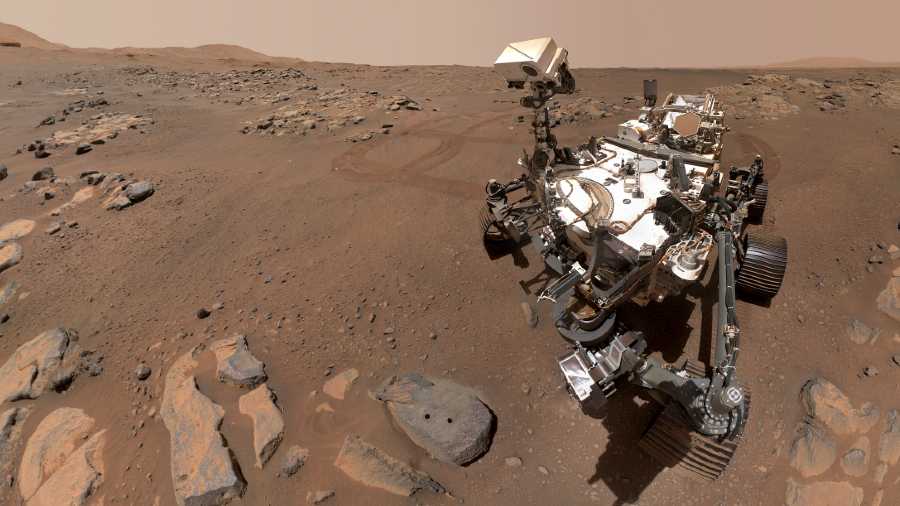The object resembles a flying saucer that crashed on Mars.
And indeed it is.
But it doesn’t belong to aliens.
Instead, the wreckage is the work of Nasa, a component called a backshell that detached during the landing of the Perseverance rover on the surface of the red planet in February 2021.
“There’s definitely a sci-fi element to it,” Ian Clark, an engineer who worked on Perseverance’s parachute system, said of photographs released on Wednesday. “It exudes otherworldly, doesn’t it?”
After spending a year exploring the rocks of the crater it landed in, the Perseverance rover passed near its landing site on its way to a river delta that once flowed along the western rim of the crater. The rover’s small robotic companion, the helicopter Ingenuity, continues to tag along.
During its 26th flight last week, Ingenuity took 10 pictures during its 159 seconds in the air covering 1,181 feet. Those show that backshell, or the top half of the landing capsule that protected Perseverance and Ingenuity as they plunged through the Martian atmosphere. Still attached is the 70-foot-wide parachute that slowed the vehicles’ descent.
The parachute and backshell detached from the rover at an altitude of 1.3 miles. A rocket-powered system called Skycrane took Perseverance the rest of the way to the surface, while the backshell and parachute landed more than a mile away to the northwest.
The backshell, nearly 15 feet in diameter, hit the ground at about 78 miles per hour, partially shattering. Otherwise, everything looks to be in good shape — no obvious signs of charring. The parachute appears to be intact as do the suspension lines connecting the parachute to the backshell. But engineers have just started scrutinising the new images in detail.
“They say a picture’s worth 1,000 words, but it’s also worth an infinite amount of engineering understanding,” Clark said.
Studying the remains of the backshell could prove helpful for Nasa’s next big Mars adventure — bringing back rocks and soil from Mars to Earth for more detailed study. That mission, called Mars Sample Return, will need to put two landers on the surface — a rover to collect rock samples being drilled by Perseverance, and a small rocket to launch the samples into orbit for another spacecraft to pick up to bring back to Earth.
“We use all of our best models, all of our best analysis tools,” Clark said. The images help verify how well the models and analysis worked, adding confidence to the models in the future.
Kenneth Farley, the mission’s project scientist, was fascinated not just by the “truly spectacular” images of the hardware but also what the hardware happened to land on.
“Remarkably, this wreckage wound up right on the contact between the two rock formations on the crater floor,” Farley said in an email. The two formations, named Seitah and Maaz, both consist of volcanic rocks. But they are very different in composition. Seitah is rich in olivine that settled out of thick magma, perhaps a lava lake. Maaz, which is on top and thus probably younger, has a composition similar to most basaltic lava flows — full of minerals known as pyroxene and plagioclase but with little or no olivine.
The two formations meet at a line of rocks that runs from the backshell to an area just next to the parachute. “We want to know how these rocks may be related to each other,” Farley said.
The mission’s scientists were so intrigued by the geology that Ingenuity made another pass over the dividing line between Seitah and Maaz on Sunday.
Perseverance has also been busy during its drives. On April 2, it took a series of pictures of the small Martian moon Phobos passing in front of the sun, a partial eclipse by the potatolike object. Detailed measurements of Phobos’s orbit give hints about the interior structure of Mars.
(New York Times News Service)










